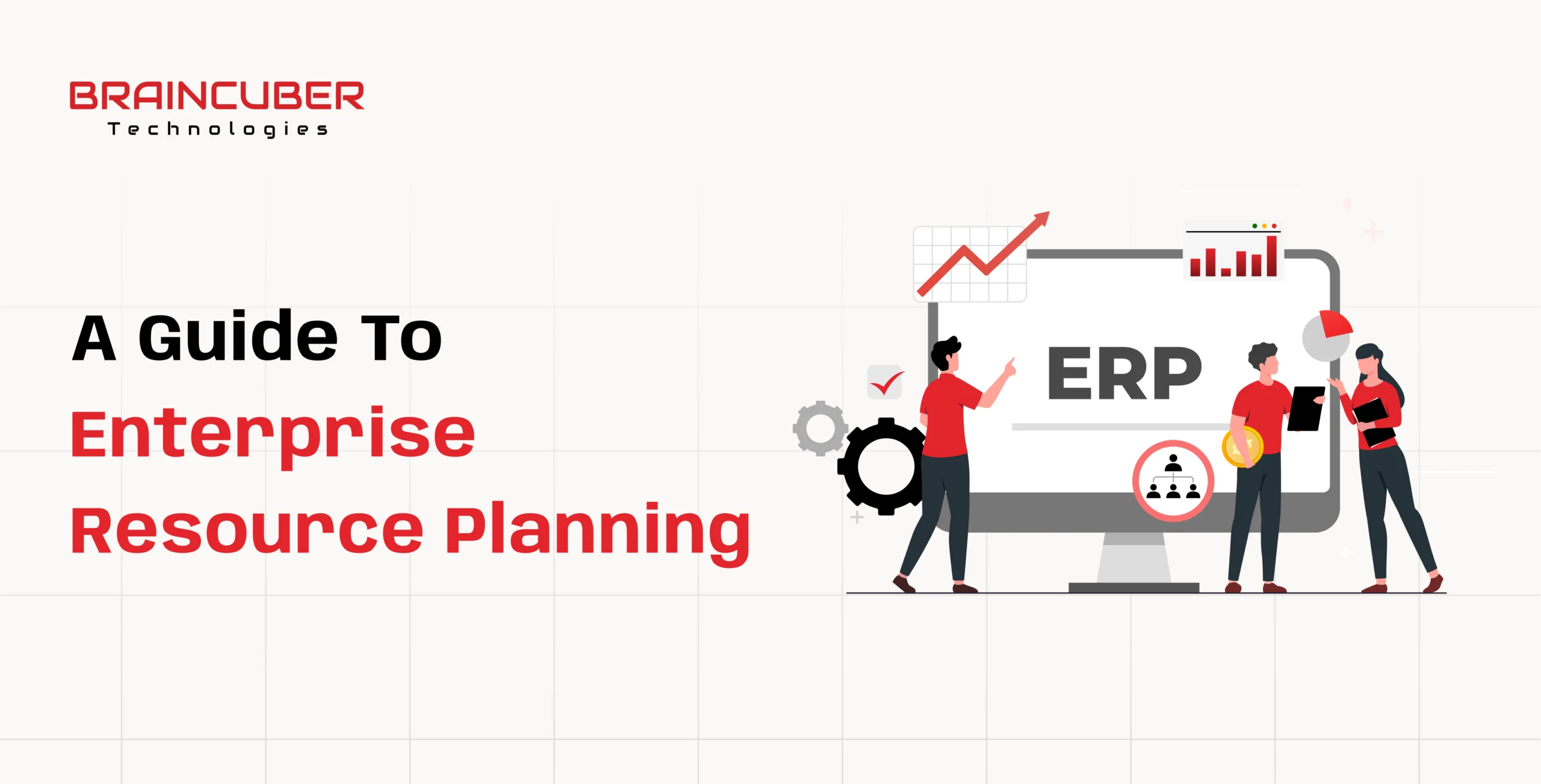Engagement Module
Next Gen AI Solution
Maintenance
Designing
Consultant
Industries
What is ERP? A Comprehensive Guide to Enterprise Resource Planning

In the digital age, many business experts have to manage and run resource processes in a
computerized automated manner, relying on “ERP” They might not be aware of the precise
Enterprise Resource Planning (ERP) software suitable for their groups.
An ERP is a complete package of software for Business Process Management (BPM) that
permits on-demand access to data and integrates multiple applications for effective
functioning of businesses.
This integrated solution is instrumental in managing and automating critical processes,
guaranteeing an organization’s smooth collection and arrangement of important information.
ERP is the backbone of organizations. It provides one centralized system that helps improve efficiency on the whole company level, ranging from accounting and human resources to sales, production, supply chain, and inventory management. In this blog, we will provide detailed
instructions on ERP
What is ERP?
Enterprise Resource Planning (ERP) is a comprehensive software package organizations utilize to manage and integrate critical operations sections. Financial management, human resource management, manufacturing and supply chain management, sales, and marketing are all part of a single integrated system by which ERP systems operate.
This integration enables real-time data sharing among various departments, thus increasing efficiency, improving decision-making abilities, and promoting teamwork. Automating repetitive tasks and providing a centralized database for information helps businesses streamline their operations, cut costs, and grow as they move on.
However, its implementation has specific challenges, such as high costs and the need for substantial changes leading to change management. ERP systems remain an essential tool in today’s world business environment.
Why is ERP important for business?
It is obligatory for firms seeking efficient utilization of resources to obtain ERP systems, just like a table stake is mandatory for gambling. They assist leaders in developing the best strategies to reallocate financial and human resources or create more cost-effective active business
prosociality services or performance.
An ERP also serves as an essential asset in planning and coordination. Employees can see inventory and customer orders in detail, compare supplier purchase orders, and forecast future needs. ERP software enhances Communication and collaboration because employees can view other departments’ statuses and make informed decisions.
An ERP system is also a one-stop shop for company reports and analytics, which may be key game changers for the business. The ability of an ERP to convert large amounts of data into graphs and charts that essentially depict patterns that help predict possible outcomes is an excellent benefit to most executives.
Types of ERP Deployment
ERP systems can be deployed in several ways, including:
On-Premises ERP
This deployment type offers more control and customization but demands a lot of IT resources and maintenance. Organizations are responsible for hardware, software updates, and data security.
Cloud-Based ERP
ERP software hosted on vendor servers offers lower costs, faster implementation, and scalability but may have limitations like customization and data control. Cloud-based solutions often come with automatic updates and security provisions.
Hybrid ERP
Combining on-site and off-site systems allows businesses to balance control choices with budget constraints, allowing flexibility for future growth and storing modules in or online.
Benefits of ERP Systems
ERP systems benefit organizations in distinct ways, which include:
1. Efficiency enhancement
Eliminating redundancy in order processing, inventory management, and payroll can improve productivity by streamlining processes and reducing turn-around time and effort.
2. Better decision-making
ERP systems have real-time data and analytics that assist in making informed decisions. Therefore, managers can know current standings, such as sales figures or stock levels, so that sound judgment may be passed to lead to company success.
3. Enhanced collaboration
centralized data allows easy sharing of information among various departments and a productive manner through which they can work together towards one end goal. In this case, it eliminates gaps between those institutions while ensuring all staff access the same information, leading to unity of command.
4. Scalability
ERP systems can accommodate the changing nature of business, evolving with time as organizations grow in size or complexity, becoming capable of accommodating more activities without having to start afresh with another package each time there is a new product line or market enterprise.
5. Regulatory Compliance
Businesses are enabled by ERP systems to comply with industry standards and regulations through accurate record maintenance and the supply of required documents.
Challenges of ERP Implementation
Integrating an ERP system is a convoluted and arduous process. Some of the usual hurdles are:
1. Very Expensive
Purchasing and implementing ERP systems often demands enormous sums of money in terms of software, hardware, and training. In addition, organizations must consider the recurring costs of maintaining such systems and support for their use.
2. Protracted
Several months or even years can be spent on ERP implementations disrupting the normal flow of business operations. Among others, data migration, system customization, and employee training make up this lengthy period.
3. Change Management
Employees might resist changes to well-established processes and systems; hence, effective change management strategies are necessary for successful adoption.
4. Customization
Customizing an ERP system for specific business requirements can be complex and expensive. On one hand, most ERP solutions have customizable options. On the other hand, extensive customization causes further delays in implementation time and increases the costs associated with such a process.
Future Trends in ERP
Multiple movements, such as changing market demands and competition in the industry, make it essential for ERP systems to keep evolving. These trends include:
AI (Artificial Intelligence) and ML (Machine Learning)
These are generally poured into ERP systems for such purposes as making data analysis easy, automating daily tasks, and improving decision-making. For instance, there are times when AI chatbots answer customer questions; machine learning models can also show predictions on future stock levels.
Internet of Things (IoT)
This allows ERP systems to gather and analyze information from linked devices for better management of supply chains and increased operational proficiency. Using sensors within the Internet of Things helps to monitor the performance of machinery and pulse stock levels, including furnishing instantaneous reports on the state of production processes.
Mobile ERP
By enabling mobile access to ERP systems, workers can perform job functions and obtain relevant documents while moving, increasing flexibility and output. Data entry, acknowledging requests, and accessing reports via smartphones or tablets are some functions that can be performed using these applications.
Enhanced User Experience (UX)
Recently, there has been an increased focus on developing modern ERP systems that are simple to operate and more pleasant for consumers. Vendors have devoted their time to designing the system to improve its aesthetic appeal and training workers in its usage so that they would use it correctly all along.
Conclusion
Modern companies need ERP systems that are crucial to integrating and managing different business processes. However, implementation challenges notwithstanding, increased efficiency, decision-making support, and better teamwork make ERP systems necessary for any organization that wants to maintain its relevance in today’s fast-changing business world.
Moreover, as technology changes, so will ERP systems with more advanced features designed to suit the growing requirements of firms.




